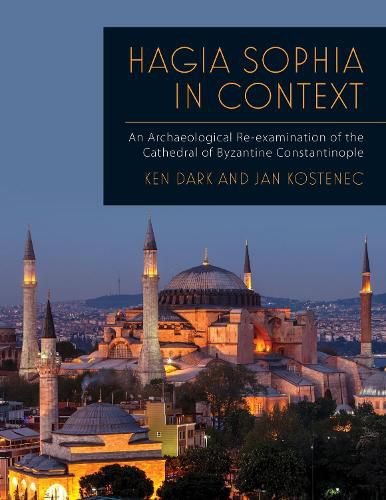Readings Newsletter
Become a Readings Member to make your shopping experience even easier.
Sign in or sign up for free!
You’re not far away from qualifying for FREE standard shipping within Australia
You’ve qualified for FREE standard shipping within Australia
The cart is loading…






The Byzantine cathedral of Hagia Sophia has been a source of wonder and fascination since its sixth-century construction. It was the premier monument of the Byzantine capital, Constantinople, and remains one of the most recognisable symbols of modern Istanbul. Often seen as encapsulating Byzantine history and culture, the building has been the subject of much scholarly interest since the Renaissance. However, while almost all previous archaeological work has focussed on the church itself, the surrounding complex of ecclesiastical buildings has been largely neglected. The research project presented here (co-directed by the authors) is the first to focus on the archaeology of the immediate environs of the church in order to understand the complex as a whole. Previously unrecorded material includes parts of the Patriarchal complex, from which the Orthodox Church was governed for almost a millennium, what may be the 'Great Baptistery' north of the church, and what are perhaps the first fragments of the fourth-century phase of the cathedral yet identified. The discovery of an unrecognised porch, surviving to its full height within the standing building, changes the known plan of the famous sixth-century church. This new information provides fresh evidence about the appearance and function of the complex, illustrating its similarities to, and dissimilarities from, Episcopal centers elsewhere in the Byzantine world. Combined with other archaeological sources, these discoveries enable us to place the sixth-century cathedral in its urban context and to reconsider what Hagia Sophia can tell us about the wider Byzantine world. AUTHORS: Ken Dark is Associate Professor in Archaeology and History at the University of Reading, where he was Director of the Research Centre for Late Antique and Byzantine Studies from 2001 until 2016. Between 1997 and 2004 he co-directed the British Museum-funded rescue archaeology program for Istanbul, published in 2013 by Oxbow as Constantinople: archaeology of a Byzantine Megapolis. Jan Kostenec is a member of the Czech National Committee of Byzantine Studies and the Czech Centre for Mediterranean Archaeology. His main interests are Late Antique and Byzantine archaeology and architecture.
$9.00 standard shipping within Australia
FREE standard shipping within Australia for orders over $100.00
Express & International shipping calculated at checkout
The Byzantine cathedral of Hagia Sophia has been a source of wonder and fascination since its sixth-century construction. It was the premier monument of the Byzantine capital, Constantinople, and remains one of the most recognisable symbols of modern Istanbul. Often seen as encapsulating Byzantine history and culture, the building has been the subject of much scholarly interest since the Renaissance. However, while almost all previous archaeological work has focussed on the church itself, the surrounding complex of ecclesiastical buildings has been largely neglected. The research project presented here (co-directed by the authors) is the first to focus on the archaeology of the immediate environs of the church in order to understand the complex as a whole. Previously unrecorded material includes parts of the Patriarchal complex, from which the Orthodox Church was governed for almost a millennium, what may be the 'Great Baptistery' north of the church, and what are perhaps the first fragments of the fourth-century phase of the cathedral yet identified. The discovery of an unrecognised porch, surviving to its full height within the standing building, changes the known plan of the famous sixth-century church. This new information provides fresh evidence about the appearance and function of the complex, illustrating its similarities to, and dissimilarities from, Episcopal centers elsewhere in the Byzantine world. Combined with other archaeological sources, these discoveries enable us to place the sixth-century cathedral in its urban context and to reconsider what Hagia Sophia can tell us about the wider Byzantine world. AUTHORS: Ken Dark is Associate Professor in Archaeology and History at the University of Reading, where he was Director of the Research Centre for Late Antique and Byzantine Studies from 2001 until 2016. Between 1997 and 2004 he co-directed the British Museum-funded rescue archaeology program for Istanbul, published in 2013 by Oxbow as Constantinople: archaeology of a Byzantine Megapolis. Jan Kostenec is a member of the Czech National Committee of Byzantine Studies and the Czech Centre for Mediterranean Archaeology. His main interests are Late Antique and Byzantine archaeology and architecture.